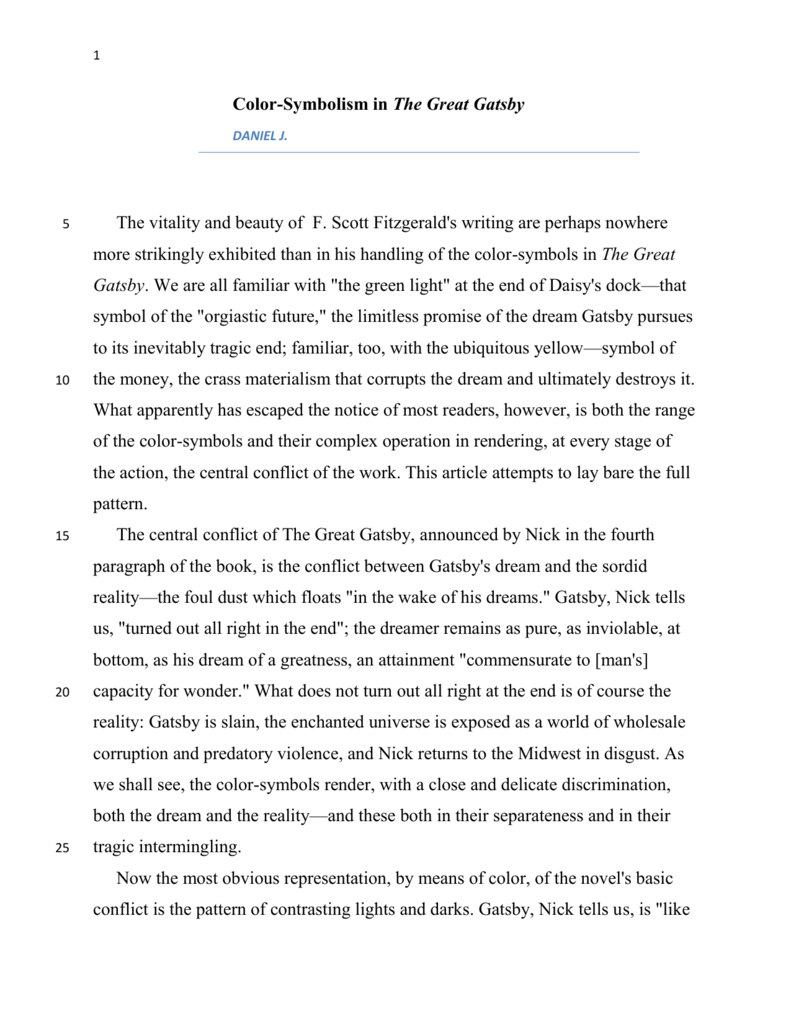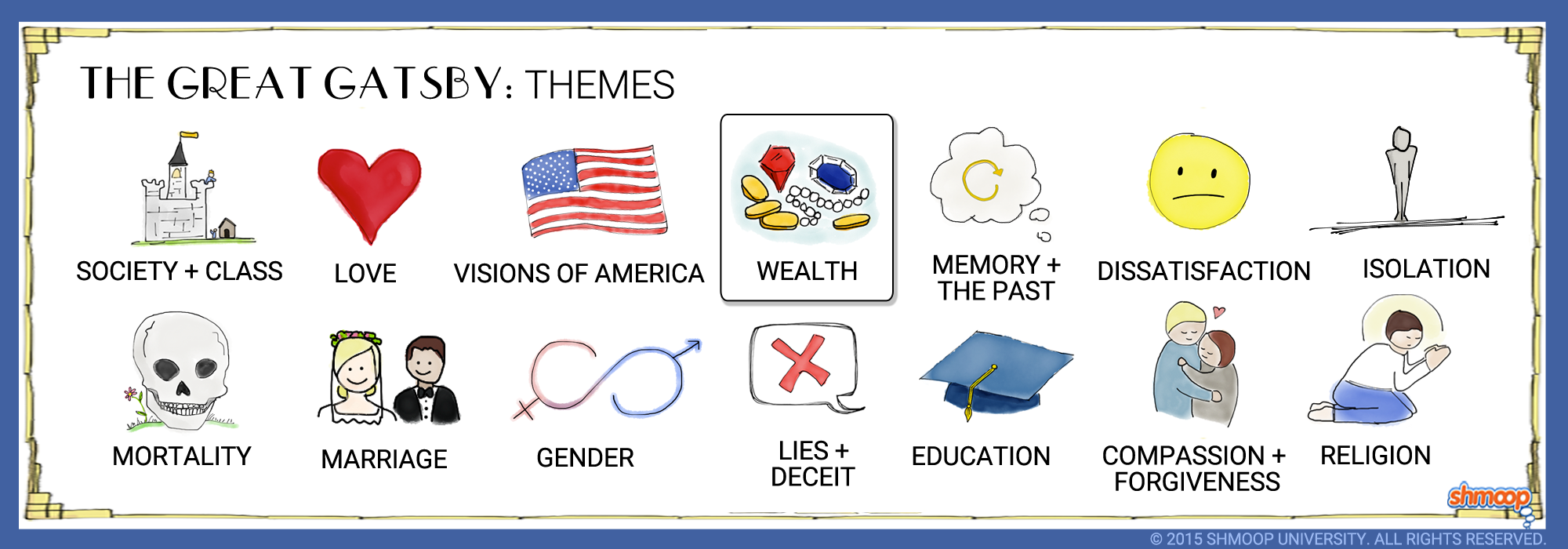

As the film goes on and Gatsby's romantic dreams fall farther and farther out of reach, we see that the green light symbolizes an even deeper desire in Gatsby to attain the unattainable. Both visible and out-of-reach, the green light represents the distance between the two lovers, both emotionally and physically. He can see her dock, and he knows she is there, just across the harbor. As it is positioned directly across the harbor from his mansion, Gatsby looks at it longingly as a symbol for his desire to be reunited with the woman he loves. At the beginning, the green light represents Gatsby's desire to win back Daisy. The green light is perhaps the most important symbol to Gatsby throughout the film. Similarly, Gatsby is very wealthy, but his wealth does not actually raise his class status in relation to the solid old money of Tom and Daisy Buchanan. Therefore, the shirts represent the complicated nature of Gatsby's power and influence while they are expensive, they are also showy and not as classy as a more "respectable" color choice. The showy colors of his shirts betray him as "new money," which diminishes his power. While they are extremely well-made shirts, they are also brightly colored, which represents the fact that Gatsby is still an outsider in the world of the upper classes. Their colors, however, complicate them as symbols. The expense and value of the shirts symbolize just how far Gatsby has ascended in the world of material wealth.

Gatsby announces their materials as he throws them down, proud of his success. Daisy marvels at the fact the shirts are extremely well-made, their materials are incredible to the touch. In addition to the over-the-top qualities of his palatial mansion, the shirts in his bedroom that he throws down to Daisy represent his immense wealth, in all its ostentation and excess. As a result, his wealth is what is considered "new money," because it is not old and inherited family wealth. As we learn later in the film, Gatsby has gained his wealth by buying up drugstores and bootlegging alcohol, an illegal offense at the time.


 0 kommentar(er)
0 kommentar(er)
